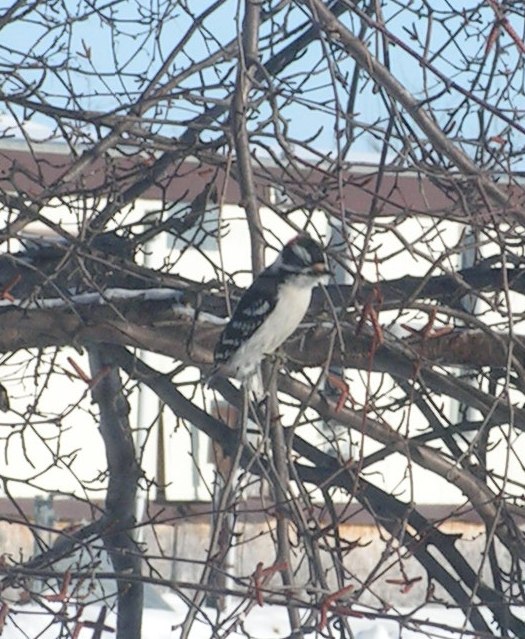 |
| We saw a Black Oystercatcher on the West Coast.... Photo courtesy Wikipedia |
What - will this winter never end? While waiting for spring and birds to return to the Prairies, I've been transcribing my notebooks to my computer and when this gets too tedious, I graze randomly through bird books or birding sites on the internet.
When I came upon this picture of the American Black Oystercatcher, I was instantly transported to the West Coast. A few years ago, while visiting our friends Kel and Norma at Gibson's on the Sunshine Coast, we went for a drive to Sechelt and on the way, stopped at a number of birding sites. On the rocks at the water's edge, we saw this all-dark largish wading bird with a fantastic orange-red, heavy, slightly flattened bill, and its peculiar yellow eye ringed with red. I recognized it instantly as an Oystercatcher because in all my bird guide books it appears on the same page as my favorite wading bird, the elegant American Avocet.
 |
Atlantic Puffin on the East Coast...
Photo courtesy Wikipedia |
It has to have a thick tough bill because it uses it to pry open mollusk shells and to probe in the sand for crabs and worms. Since the entire world population of Black Oystercatchers is estimated at less than 10,000, I was delighted to see it.
And speaking of unusual bills, take a look at the Atlantic Puffin. When John started planning a Maritime vacation to connect with his relatives and friends and retrace his family roots, I begged for a chance to track down an Atlantic Puffin. Now why would a prairie born and bred gal be interested in a puffin? The cover of
Peterson Field Guides' Western Birds edition has a Tufted Puffin on the cover and these cartoon-like birds have always fascinated me.
We visited his relatives first and I polled all of them about puffins. Not one had ever seen a puffin. My darling husband, however, did find a way for me to see puffins. We drove to the Eastern side of Cape Breton and and took a boat tour to what was called the Bird Islands out in the Atlantic. There, near the tops of rocky cliffs, we came upon a colony of Atlantic Puffins nesting with Razorbills, Black Guillemots, Kittiwakes and other gulls.
I had expected Puffins to be big birds. In photos, they look like they must be the size of Penguins. Nope. They are about the size of a robin but fatter - 10-11 inches long. They look like mini-torpedoes when they are flying. Their orange bills and orange legs are conspicuous. The black eye-liner markings around their eyes gives them a comic cartoon appearance.
They nest in burrows on the rocky cliffs. The only time they are on land is during nesting season. The rest of the time they are way out in the ocean - their powerful wings are adapted for swimming and they use their feet for rudders. They even mate at sea.
When they come ashore to nest, the male digs out the burrow or cleans out an existing one. The female lays only one egg and both parents take turns incubating it. When the egg hatches in 40 or so days, they share the feeding responsibilities. Adaptations of their big beaks help them carry up to a dozen little fish at a time. Their tongue holds the fish against the spines in their palate.
 |
| Pair of Atlantic Puffins. Photo from Wikipedia |
When we were there, we were told that the parents force feed the youngster at the end of the nesting tunnel, making the baby grow fatter and fatter until he is too fat to get out through the tunnel. The parents then abandon him/her and fly back out to sea. By the time the baby has lost enough weight to fit through the tunnel, he is old enough and strong enough to fledge on his own, and takes his solitary flight to freedom.
Wikipedia says that contrary to popular belief, the chick is not abandoned by its parents. So who do you believe? I found the abandoned baby story somehow very touching and the most extreme case of tough love!
And a bit more trivia for you. The Puffin is a member of the Auk family. And did you know it is the provincial bird of Newfoundland and Labrador?




































